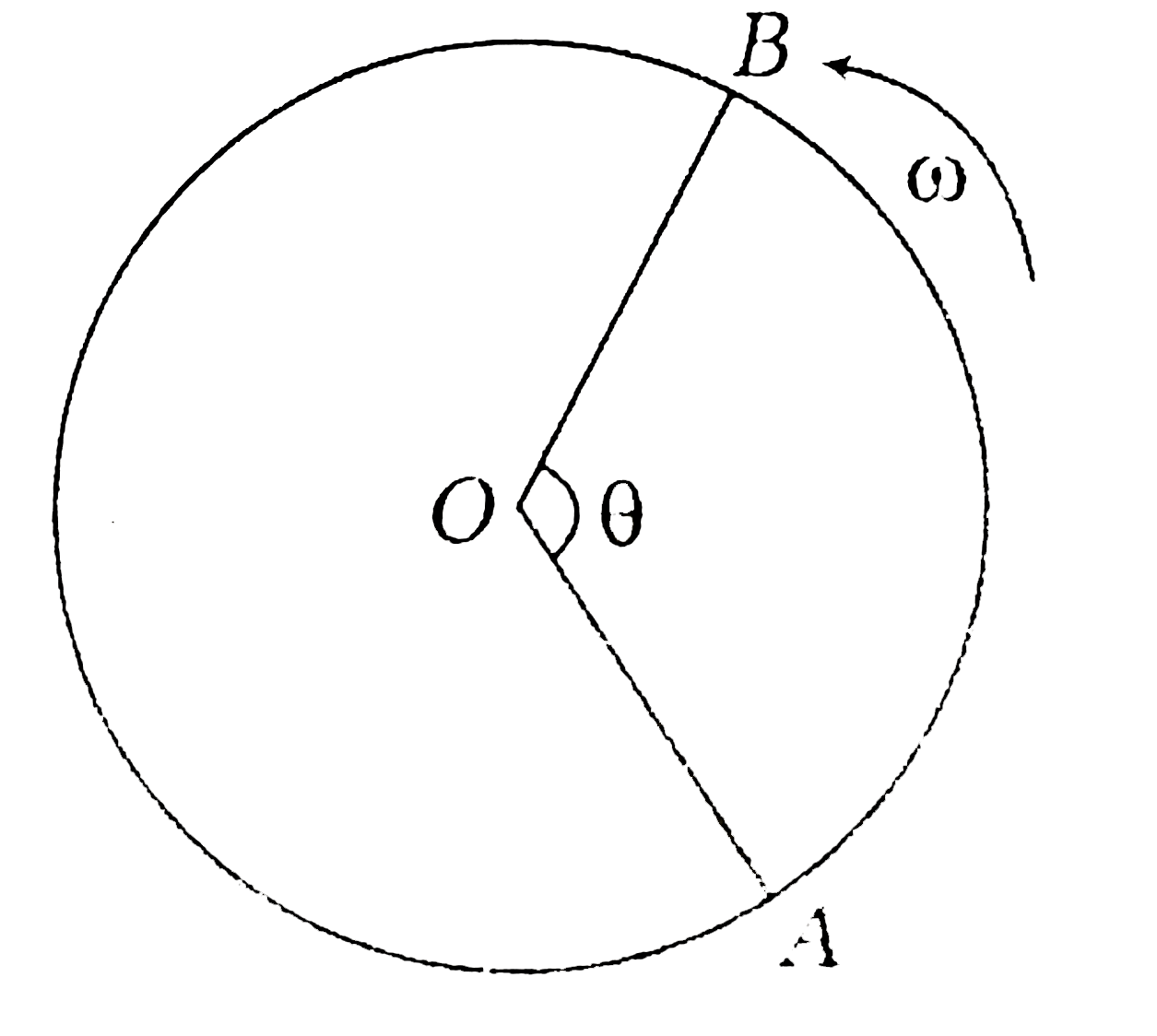A straight conducting wire MN of length 4m is rotated in a uniform magnetic field →b=0.1 Tesla (ˆk) about point O with angular speed ω=10rad/s as shown in the figure. The axis of rotation is parallel to →B. Find the potential difference (in volt) between point M and point N.

The correct Answer is:4.80
e1=Bωl22,e2=Bωl222
⇒VN−VM=e2−e1=Bω2(l22−l21)
=2BωR2cosθ=4.8volt.
Topper's Solved these Questions
Similar Questions
A conducting rod AC of length 4l is rotated about point O in a uniform magnetic field →B directed into the plane of the paper. AO=landOC=3l. Find VA−VC.

View SolutionA conducting circular ring is rotated with angular velocity ω about point A as shown in figure. Radius of ring is a find

a. potential difference between points A and C
b. potential difference the points A and D.
View Solution
Knowledge Check
If the electric field is given by →E=(100x2)i the potential difference between points x=10m and x=20m in volts is
A−5B5C−10D10A rod OA of length l is rotating (about end O) over a conducting ring in crossed magnetic field B with constant angular velocity ω as shown in figure.
 ACurrent flowing through the rod is 3Bωl24RBMagnetic force acting on the rod is 3B2ωl34RCTorque due to magnetic force acting on the rod is 3B2ωl48RDMagnitude of external force that acts perpendicularly at the end of the rod of maintain the constant angular speed is 3B2ωl38R
ACurrent flowing through the rod is 3Bωl24RBMagnetic force acting on the rod is 3B2ωl34RCTorque due to magnetic force acting on the rod is 3B2ωl48RDMagnitude of external force that acts perpendicularly at the end of the rod of maintain the constant angular speed is 3B2ωl38RA metallic rod of length l is hinged at the point M and is rotating about an axis perpendicular to the plane of paper with a constant angular velocity ω. A uniform magnetic field of intensity B is acting in the region (as shown in the figure) parallel to the plane of paper. The potential difference between the points M and N
 Ais always zeroBvaries between 12Bωl2 to 0Cis always 12Bωl2Dis always Bωl2
Ais always zeroBvaries between 12Bωl2 to 0Cis always 12Bωl2Dis always Bωl2
A conducting ring of radius l m kept in a uniform magnetic field B of 0.01 T, rotates uniformly with an angular velocity 100 rad s–1 with its axis of rotation perpendicular to B. The maximum induced emf in it is
View SolutionA conducting rod of length l is rotating with constant angular velocity ω about point O in a uniform magnetic field B as shown in the figure . What is the emf induced between ends P and Q ?

View Solution(a) A metal rod of length L rotates about an end with a uniform angular velocity ω . A uniform magnetic field B exists in the direction of the axis of rotation. Calculate the emf induced between the ends of the rod. Neglect the centripetal force acting on the free electrons as they move in circular paths.
(b) A rod of length L rotates with a small but uniform angular velocity ω about its perpendicular bisector. A uniform magnetic field B exists parallel to the axis of rotation. Find the potential difference (i) between the centre of rod and one end and (ii) between the two ends of the rod.
View SolutionA uniform magnetic field →B=B0ˆk exists in a region. A current carrying wire is placed in x-y plane as show. Find the force acting on the wire AB, if each section of the wire is of length 'a'.

View SolutionA circular disc of radius R is rotating about its axis O with a uniform angular velocity ωrad s−1 as shown in the figure. The magnitude of the relative velocity of point A relative to point B on the disc is

View Solution